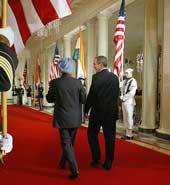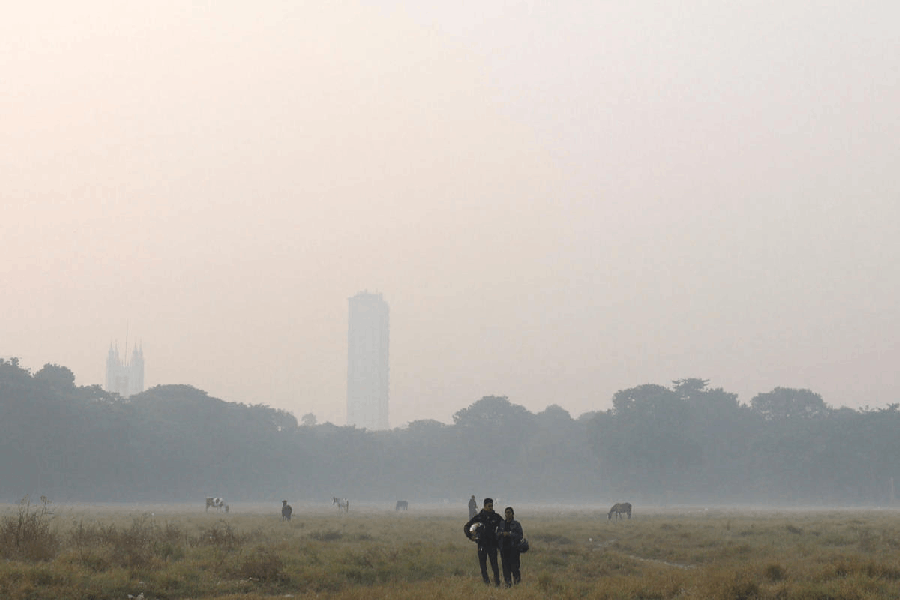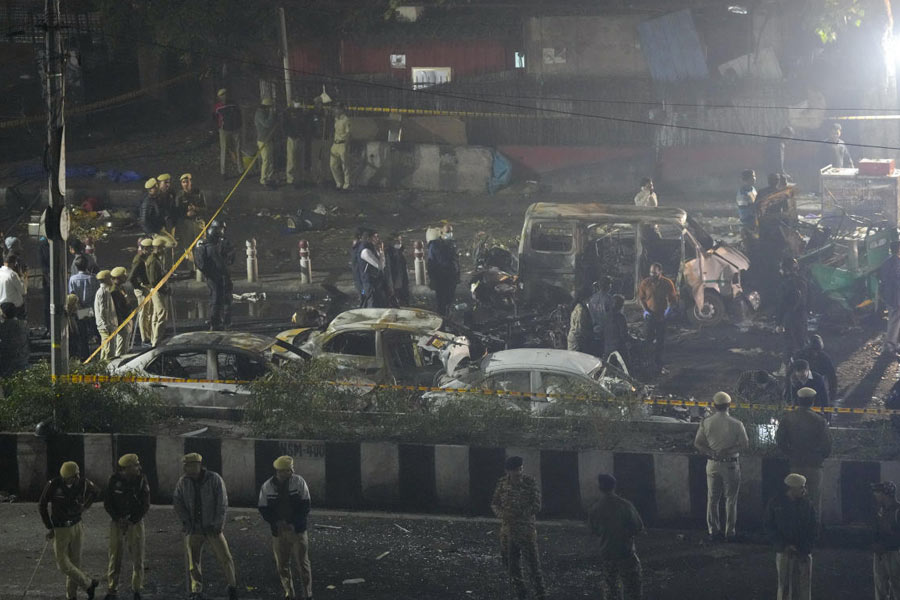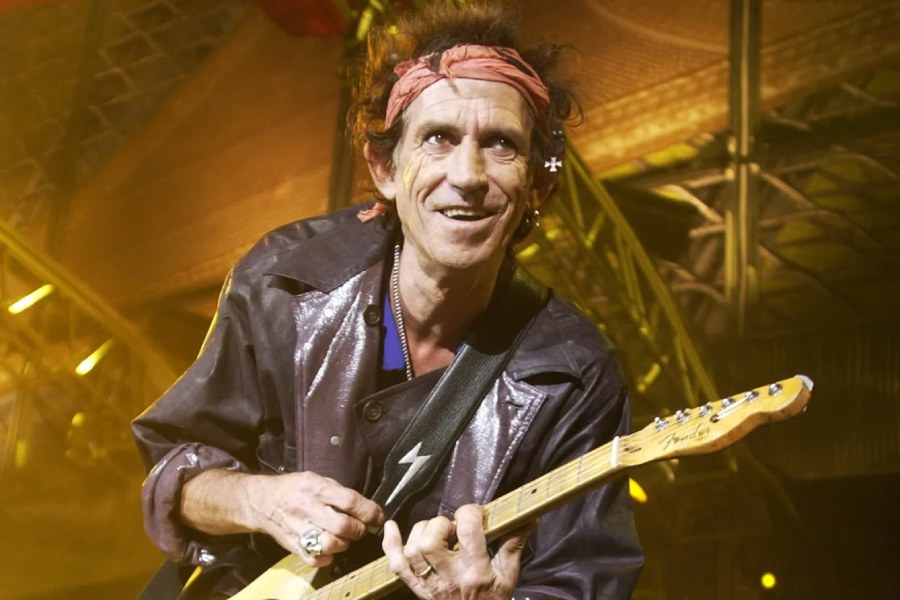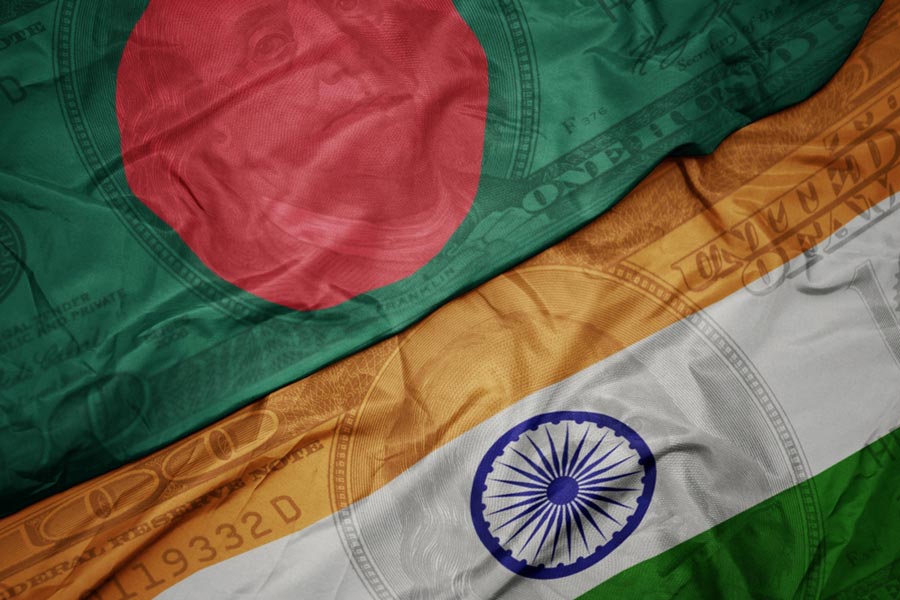|
|
| Does it hold promise? |
Last month, at the Biju Janata Dal office in Bhubaneswar, party workers spotted a familiar figure in churidar-kurta who they thought was trespassing on the premises. Before the men could recover from their collective shock, the party leader and chief minister, Naveen Patnaik, welcomed the 48-year-old Tathagata Satpathy with a gratuitous smile and laddoos. While some rubbed their eyes in disbelief, others tried to fathom Satpathy’s new-found love for Patnaik.
For the past five years, Satpathy, the party’s former member of parliament from Dhenkanal, had grabbed every opportunity to criticize Patnaik through the pages of the Oriya daily, Dharitri, which he owns and edits. Till last month, Satpathy had been the general secretary of the Orissa Gana Parishad, a party founded by Patnaik’s bête noire, Bijoy Mohapatra, after his suspension from the BJD about four years ago. With the Lok Sabha elections round the corner, Satpathy lost no time in coaxing Mohapatra to give him a ticket from Dhenkanal. When he severed his ties with OGP, Satpathy pleaded that he was being forced to quit because of the OGP’s alliance with the J.B. Patnaik-led Congress.
It seems to be the season for turncoats. As the state goes to polls for the Lok Sabha and the 147-member assembly next month, politicians are changing colours as fast as the chameleon. It’s not Satpathy alone who has done it. Early this month, the chief minister wooed Archana Nayak and Harihar Swain into his party and offered them Lok Sabha tickets from Kendrapara and Aska, respectively. Last month at a meeting in Kendrapara, Nayak had accused Naveen Patnaik of minting crores by giving out mining leases to outsiders. Now that Nayak is on the other side of the political fence, she is singing paeans to the chief minister. Ditto for Satpathy. “It’s just like a home-coming. For Naveen, I would be like the mythical squirrel of Ramayana which had contributed its bit to help Ram build the bridge to Lanka,” said the mercurial son of the former chief minister, Nandini Satpathy. The former Koraput district Congress committee president, Gupta Prasad Das, has also discovered the virtues of the chief minister after he was made the BJD candidate from Koraput assembly constituency.
This month also witnessed the former BJD leader, Dilip Ray, putting all his anti-Congress rhetoric behind him and joining the Congress, together with the former BJD working president, Nalinikanta Mohanty, and the former finance minister, Ramakrushna Patnaik. The troika, which took the lead in anointing Naveen Patnaik as the BJD chief after the death of Biju Patnaik in 1997, has been expelled from the BJD for indulging in “anti-party activities”. As the battlelines get drawn for the elections, the flurry of defections and “homecomings” has left the 3.6 crore voters in a daze.
In an election devoid of any dominant issue, defections and rebellions seem to be the order of the day. While the BJD gave priority to Congress-defectors in its final list of candidates for the assembly and Lok Sabha, the Congress has done similarly, thus alienating its core supporters in several places. As expected, rebel candidates are mushrooming in most of the assembly constituencies. Gupta Prasad Das has to contend with opposition from within the BJD in Koraput, apart from facing his Congress opponent, Tara Bahinipati. On the other hand, the Congress candidate and former BJD health minister, Kamala Das, is facing a tough challenge from the Congress rebel, Umarani Patra, in Bhograi. In Rajnagar constituency, the former BJD minister and now a Congress candidate, Nalini Mohanty, is facing disquiet among the rank and file of the party.
While disgruntlement among party workers is a common experience for almost all parties which have rebel candidates in the fray, the BJD, particularly, is in a difficult spot. When Naveen Patnaik announced the BJD list of 84 candidates last week, he denied tickets to 17 of his sitting legislators, including the controversial assembly speaker, Sarat Kar, who is allegedly involved in a job racket scam. To put up a youthful face, the party has given tickets to 23 new faces. On the other hand, the Bharatiya Janata Party has also denied tickets to nine of its sitting members of legislative assembly.
On top of this, the failure of both parties to swap 12 assembly seats could cost them dear. Of the 147 seats in the state assembly, the BJD is contesting 84 seats while the BJP has put up its nominees for as many as 63 seats. Though leaders of both the parties had decided to swap seats in about a dozen assembly segments in the “best interests of the alliance”, the intransigence of the BJP state unit president, Manmohan Samal, who is hell-bent on contesting from the Dhamnagar seat, could cost the alliance a dozen seats. Samal, who is a member of the Rajya Sabha, had lost to the BJD rebel, Manas Mallick, despite A.B. Vajpayee and L.K. Advani rooting for him in Bhadrak in 2000. Mallick was suspended and later came back to the party with expectations that he would be given the BJD ticket for Dhamnagar this time. Things seemed to be going fine for the alliance till Samal lobbied hard with the central BJP leadership to include his name. A miffed Naveen Patnaik then seems to have decided to call off the arrangement between the two parties.
In 2000, both the parties had managed a comfortable majority with 107 seats between them in the assembly. Despite the absence of any seat-swapping formula, it was easy for the alliance to decimate a weak Congress. But things may not be easy this time with a resurgent Congress under J.B. Patnaik. Though the party is yet to declare its candidates for about half-a-dozen assembly seats and the Lok Sabha constituencies of Cuttack and Puri, it seems to be catching up fast. The Congress pitch has picked up after Sonia Gandhi logged more than 400 kilometres during her two-day roadshow in Ganjam and Khurda. The party is also coming to terms with coalition politics and has left 19 seats to smaller political outfits like the OGP, Jharkhand Mukti Morcha and the left parties.
Political observers feel that it will be tough for the BJP-BJD alliance to hold its head above water. “The alliance is likely to face a setback in the assembly polls though it would hold on to its 19 seats in the Lok Sabha polls,” says Rabi Das, a leading political analyst and editor of the Oriya daily, Paryabekhyak. History also seems to be against the alliance. No coalition government in Orissa has ever won a second term in office. The last time a coalition ruled the state was in 1971, when the Swatantra Party and Utkal Congress coalition swept into power decimating the Congress. In 1971 also, the state saw simultaneous polls to the assembly and the Lok Sabha. While the Congress headed by Indira Gandhi swept the Lok Sabha polls, winning 16 of the 20 seats, in the assembly polls, it could win only 50 of the 140 seats. While there may be doubts over the largely illiterate population being able to vote differently for the two polls, a senior political commentator argues, “If they could choose to vote differently then, it is very much possible now.”
While the BJD is banking heavily on the reservoir of goodwill that Biju Patnaik enjoys and the image of Naveen Patnaik, taking on the J.B. Patnaik-led Congress could be a different ball game altogether. If the BJD-BJP alliance fails to win, it will be a case of another political coalition biting the dust despite the help of last-minute turncoats like Satpathy.

